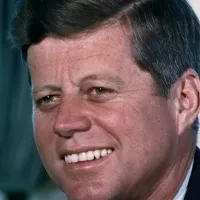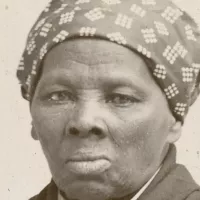The North American Aerospace Defense Command (NORAD) is a joint United States and Canada organization. Its primary mission is to provide aerospace warning, air sovereignty, and protection for both Canada and the continental United States. Originally established as the North American Air Defense Command, it was renamed in 1981. NORAD serves as a bi-national military command, demonstrating a strong defense alliance between the two countries. It monitors airspace and provides early warning of potential threats.
1950: Discontinuation of Long Range Air Raid Warning System
The RCAF's 1950 "ground observer system, the Long Range Air Raid Warning System", was discontinued. In January 1959, the United States Ground Observer Corps was deactivated.
1954: Ent Air Force Base Blockhouse
NORAD's command headquarters was established on 12 September 1957 at Ent Air Force Base's 1954 blockhouse.
December 1955: "NORAD Tracks Santa" Program Begins
On 24 December 1955, as a publicity move, NORAD's predecessor, the Continental Air Defense Command (CONAD), informed the press that CONAD was tracking Santa Claus's sleigh, thus beginning the "NORAD Tracks Santa" program.
1956: NORAD Recommended
In late 1956, the Joint Canadian–U.S. Military Group recommended the establishment of the North American Air Defense Command.
February 1957: NORAD Approved by U.S. Joint Chiefs of Staff
In February 1957, the establishment of the North American Air Defense Command was approved by the U.S. Joint Chiefs of Staff.
August 1957: NORAD Announcement
In August 1957, the establishment of the North American Air Defense Command was officially announced.
September 1957: NORAD Command Headquarters Established
On 12 September 1957, NORAD's command headquarters was established at Ent Air Force Base's 1954 blockhouse.
December 1958: CADIN and BMEWS Plans Submitted
In December 1958, NORAD submitted plans that included the cost of the accelerated Nike Zeus program and three Ballistic Missile Early Warning System (BMEWS) sites, with an average yearly expenditure of around five and one half billions.
1958: Agreement on NORAD Commander and Primary Purpose
In 1958, Canada and the United States agreed that the NORAD commander would always be a United States officer, with a Canadian vice commander. Canada agreed the command's primary purpose would be early warning and defense for the Strategic Air Command's (SAC)'s retaliatory forces.
January 1959: CADIN Cost-Sharing Agreement Signed
In late 1958, Canada and the United States started the Continental Air Defense Integration North (CADIN) for the Semi-Automatic Ground Environment air defense network. The initial CADIN cost-sharing agreement between the two countries was signed in January 1959.
January 1959: Deactivation of United States Ground Observer Corps
The RCAF's 1950 "ground observer system, the Long Range Air Raid Warning System", was discontinued. In January 1959, the United States Ground Observer Corps was deactivated.
August 1960: Expansion of Cheyenne Mountain Bunker's Mission
In August 1960, the planned mission of the Cheyenne Mountain nuclear bunker was expanded to include supervising and directing operations against space attack as well as air attack.
October 1960: Operational Command of Space Surveillance Assigned
In October 1960, the Secretary of Defense assigned operational command of all space surveillance to Continental Air Defense Command (CONAD) and operational control to North American Air Defense Command (NORAD).
December 1960: Space Detection and Tracking System Under CINCNORAD Control
In December 1960, the Joint Chiefs of Staff (JCS) placed the Ent Air Force Base Space Detection and Tracking System (496L System with Philco 2000 Model 212 computer) under the operational control of CINCNORAD during the Cheyenne Mountain nuclear bunker excavation, and the joint SAC-NORAD exercise Sky Shield II.
September 1962: Sky Shield III Exercise Conducted
In September 1962, the "Sky Shield III" exercise was conducted for mock penetration of NORAD sectors.
June 1963: President Kennedy Visits NORAD Headquarters
President John F. Kennedy visited NORAD headquarters after the 5 June 1963 United States Air Force Academy graduation.
1963: NORAD Bunker Construction Completed
Canada's NORAD bunker at CFB North Bay with a SAGE AN/FSQ-7 Combat Direction Central computer was constructed from 1959 to 1963.
October 1964: NORAD Begins Manning Cheyenne Mountain Complex
On 30 October 1964, NORAD began manning the Combat Operations Center in the Cheyenne Mountain Complex.
1965: NORAD Personnel Involvement
In 1965, about 250,000 United States and Canadian personnel were involved in the operation of NORAD.
January 1966: COC Turned Over to NORAD
On 1 January 1966, Air Force Systems Command turned the COC over to NORAD.
February 1966: NORAD Cheyenne Mountain Complex Accepted
The NORAD Cheyenne Mountain Complex was accepted on 8 February 1966.
November 1968: NORAD Command Organization Realignments Begin
United States Department of Defense realignments for the NORAD command organization began on 15 November 1968 (e.g., Army Air Defense Command (ARADCOM)).
1968: Canadian Forces Unification
Prior to the 1968 unification of the Canadian Forces, the NORAD deputy commander was an RCAF air marshal. After the unification, the deputy commander became a Royal Canadian Air Force lieutenant general.
1970: Colossus:The Forbin Project movie
The 1970 movie, Colossus:The Forbin Project is largely based on NORAD.
1972: Establishment of NORAD Regional Areas
By 1972, there were eight NORAD "regional areas ... for all air defense".
November 1979: NORAD System Failure
On 9 November 1979, a technician in NORAD loaded a test tape but failed to switch the system status to "test", causing a stream of constant false warnings to spread to two "continuity of government" bunkers as well as command posts worldwide.
December 1979: SAC Assumes Control of Warning and Surveillance Facilities
Following the 1979 Joint US-Canada Air Defense Study, on 1 December 1979, SAC assumed control of ballistic missile warning and space surveillance facilities from ADCOM.
1979: NORAD Cheyenne Mountain Complex Improvements Program Operational
The NORAD Cheyenne Mountain Complex Improvements Program (427M System) became operational in 1979.
March 1980: Aerospace Defense Command Ends
The Aerospace Defense Command major command ended 31 March 1980. Its organizations in Cheyenne Mountain became the ADCOM specified command under the same commander as NORAD.
June 1980: Computer Communications Device Failure
On 3 June 1980, and again on 6 June 1980, a computer communications device failure caused warning messages to sporadically flash in U.S. Air Force command posts around the world that a nuclear attack was taking place.
March 1981: NORAD Renamed
In March 1981, NORAD was renamed North American Aerospace Defense Command.
1982: NORAD Test and Development Facility Located at Peterson AFB
In 1982, a NORAD Off-site Test Facility called the Test and Development Facility (TDF) was located at Peterson AFB.
April 1983: Canadian NORAD Region Headquarters Established
On 22 April 1983, the Canadian NORAD Region Headquarters was established at CFB Winnipeg, Manitoba, responsible for providing surveillance and control of Canadian airspace.
1983: WarGames Film Released
The NORAD command center located under Cheyenne Mountain, Colorado is a setting of the 1983 film WarGames.
September 1985: United States Space Command Formed
The United States Space Command was formed in September 1985 as an adjunct, but not a component of NORAD.
1986: DEW Line Sites Replacement Begins
DEW line sites were replaced between 1986 and 1995 by the North Warning System.
1989: NORAD Operations Expand to Counter-Drug Operations
In 1989, NORAD operations expanded to cover counter-drug operations, for example, tracking of small aircraft entering and operating within the United States and Canada.
September 1990: First Air Force Assumes Air Defense Mission
In September 1990, the First Air Force (1 AF) became responsible for the USAF air defense mission. The Continental NORAD Region (CONR) is the NORAD designation of the United States Air Force First Air Force/AFNORTH.
1995: DEW Line Sites Replacement Ends
DEW line sites were replaced between 1986 and 1995 by the North Warning System.
1996: CANR Renamed and Relocated
In 1996, the Canadian NORAD Region (CANR) was renamed 1 Canadian Air Division and moved to CFB Winnipeg.
September 11, 2001: Operation Noble Eagle Launched
Following the terrorist attacks of September 11, 2001, the Continental NORAD Region (CONR) became the lead agency for Operation Noble Eagle, an ongoing mission to protect the continental United States from airborne attacks.
July 2006: Cheyenne Mountain Realignment Announced
In July 2006, the Cheyenne Mountain Realignment was announced, to consolidate NORAD's day-to-day operations at Peterson Air Force Base. Cheyenne Mountain remains on "warm standby", staffed with support personnel.
2014: NORAD Dissolves in Interstellar Film
In the 2014 film Interstellar, NORAD dissolves and its headquarters is converted for NASA.
Mentioned in this timeline

John F Kennedy JFK was the th U S President...
NASA the National Aeronautics and Space Administration is an independent...
Canada is a North American country the second largest in...

September is the ninth month of the year in the...
Trending

2 months ago Sam Altman Envies Gen Z Dropouts' Startup Opportunities: A Generational Perspective on Education.

8 months ago Kimora Lee Simmons preserves her extensive wardrobe for daughter Ming Lee's future.

Zooey Deschanel is an American actress and musician known for her distinctive deadpan comedic roles She began her film career...

1 month ago Off-Broadway 'Grease' parody 'Vape' reimagines Danny, sparking discussions with Scott Silagy and Lara Strong.

Malala Yousafzai is a Pakistani activist advocating for female education notably in the Swat Valley where the Taliban restricted girls'...

Steven Matz is an American professional baseball pitcher currently playing for the Boston Red Sox in MLB Drafted by the...
Popular
Matt and Ross Duffer known as the Duffer Brothers are...
Aftyn Alyssa Behn is an American politician currently serving as...

Candace Owens is an American conservative political commentator and author...

Ilhan Omar is an American politician currently serving as the...

XXXTentacion born Jahseh Dwayne Ricardo Onfroy was a controversial yet...

Harriet Tubman was a pivotal American abolitionist and social activist...